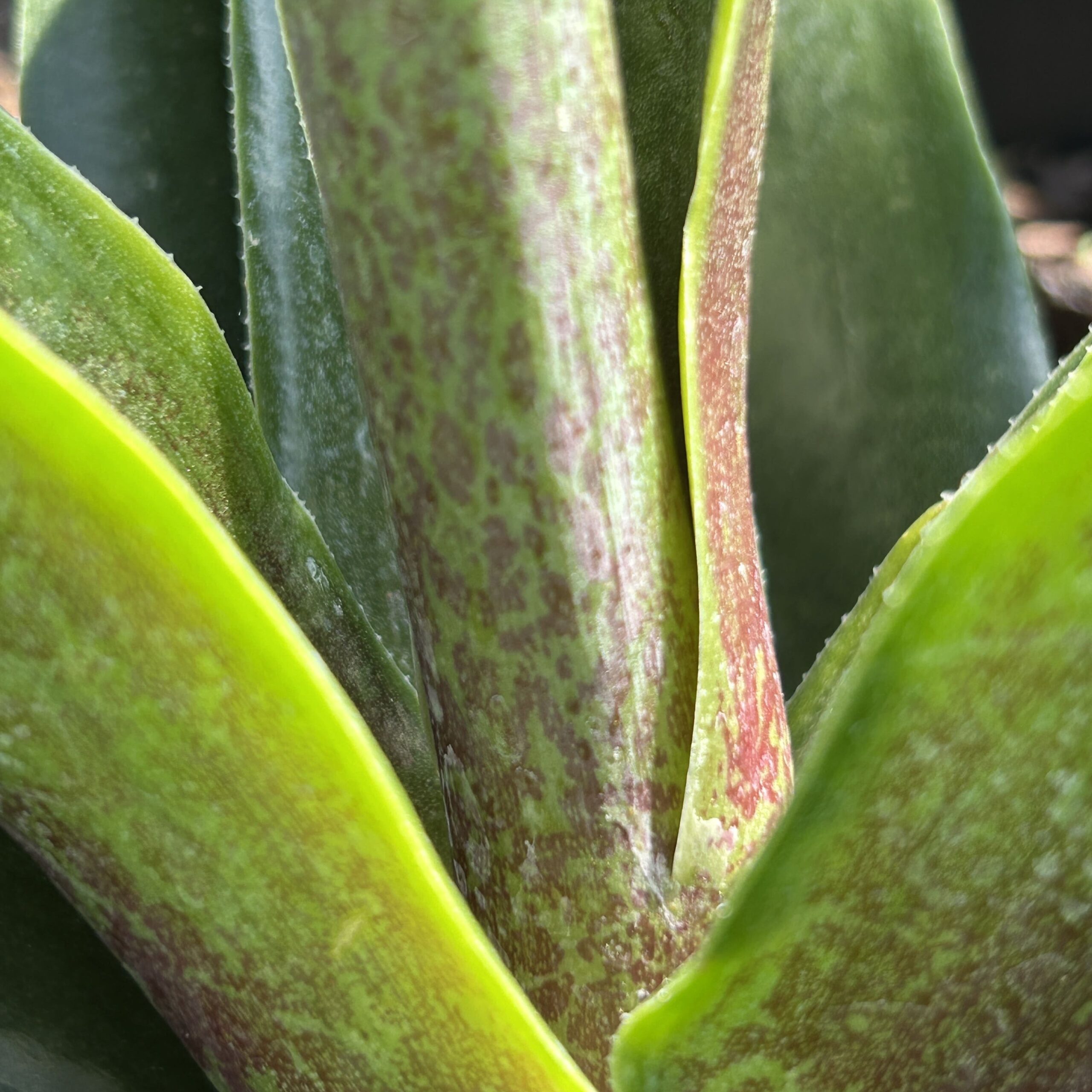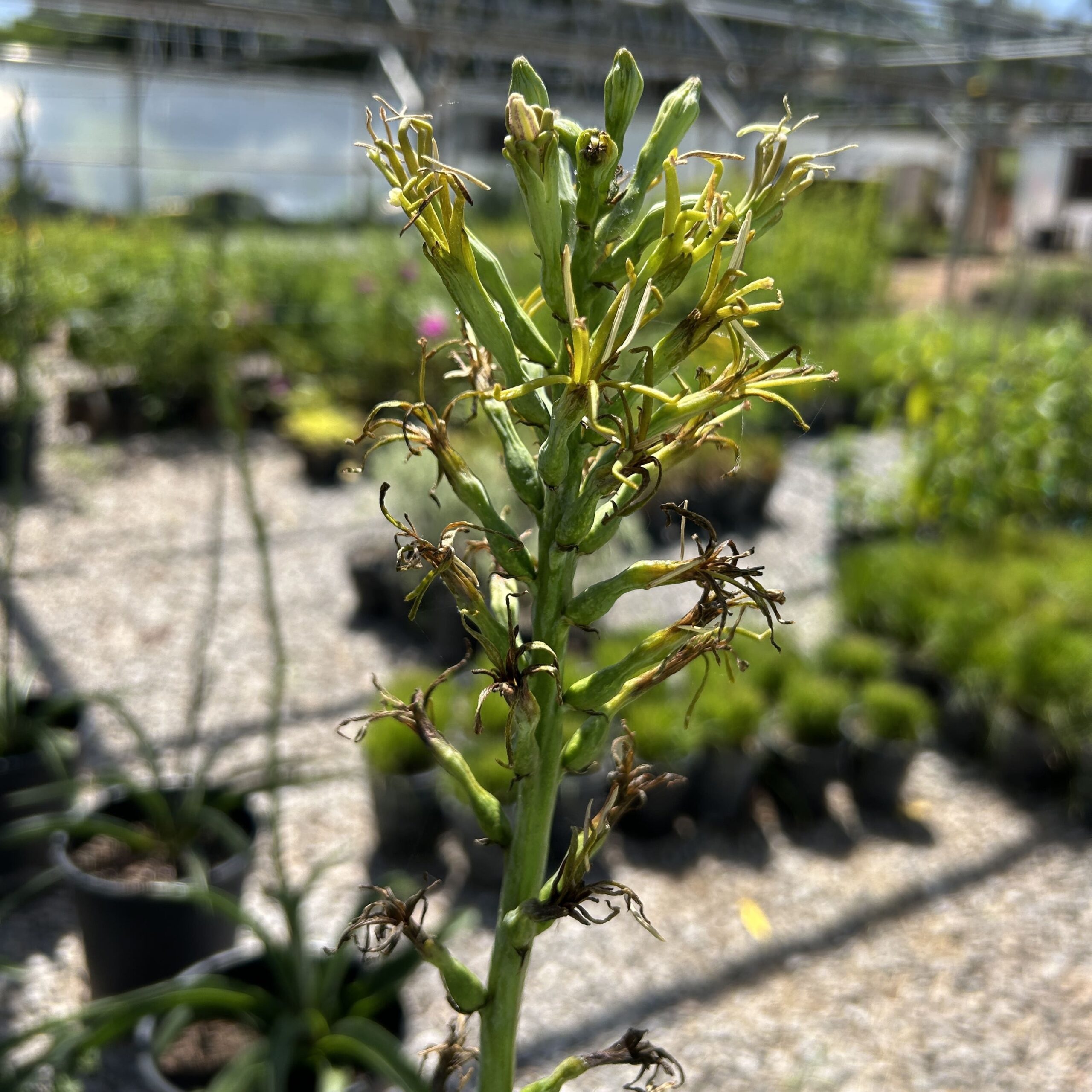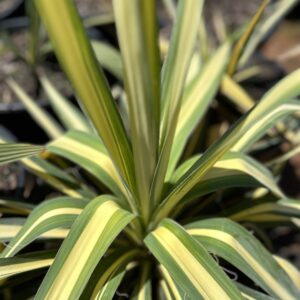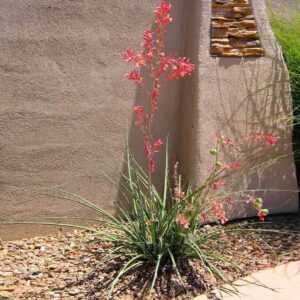False Aloe
Overview: False aloe (Manfreda virginica) is a hardy, native perennial in the Agave family known for its spotted, fleshy leaves and tall, summer-blooming flower spikes that attract nocturnal pollinators like moths. It thrives in well-drained soils and full to partial sun, and it is tolerant of drought and cold, making it well-suited for USDA zones 5–10. In winter, the foliage dies back, but the plant reliably returns in spring, offering resilience and ornamental interest in a native or xeriscape garden
Typical Uses:
False Aloe serves various purposes in garden and landscape design:
-
Pollinator Gardens: Its fragrant, night-blooming flowers attract moths, especially sphinx moths, making it ideal for supporting nocturnal pollinators.
-
Native Plant Landscaping: Commonly used in native or wildflower gardens due to its regional adaptability and low maintenance needs.
-
Xeriscaping: Its drought tolerance and succulent-like foliage make it suitable for water-wise and low-irrigation landscapes.
-
Erosion Control: The deep root system helps stabilize soil, especially on slopes or in restoration projects.
-
Ornamental Foliage Accent: The unique, spotted leaves and tall flower stalks provide texture and visual interest in mixed perennial beds.
Establishment and Care Instructions:
Planting: It is best to plant in spring or early fall for the best establishment. Choose a spot with full sun to part shade, well-draining soil (avoid heavy clay). Space plants 18″-24″ apart too allow mature spread.
Watering: During establishment phase water deeply once or twice per week to encourage deep root growth. Very drought tolerant; water occasionally during prolonged dry periods. Important to note that overwatering or poor drainage can lead to root rot.
Pruning: Foliage naturally dies back in winter; cut back dead leaves in late winter or early spring before new growth emerges.
Fertilizing: thrives in poor to moderately fertile soils. If desired, apply a light dose of balanced fertilizer (e.g., 10-10-10) in early spring. Avoid over-fertilizing, which can lead to excessive leaf growth and fewer blooms.
Special Features and Usage:
False Aloe offers several distinctive features:
- Foliage: Thick, blue-green leaves with sharp spines and teeth along the edges form a striking rosette, providing year-round structure and interest.
- Flowers: Produces a towering flower spike that can reach up to 30 feet tall, bearing yellow to greenish blooms, typically once in its lifetime before dying back.
- Drought Tolerance: Highly drought-tolerant once established, making it ideal for xeriscaping and low-water landscapes.
- Low Maintenance: Requires minimal care once established, including little to no pruning and is resistant to pests and diseases.
- Adaptability: Thrives in a variety of soil types, including sandy and rocky soils, and is tolerant of heat, cold, and poor soil conditions, making it a versatile addition to many garden settings.








Reviews
There are no reviews yet.